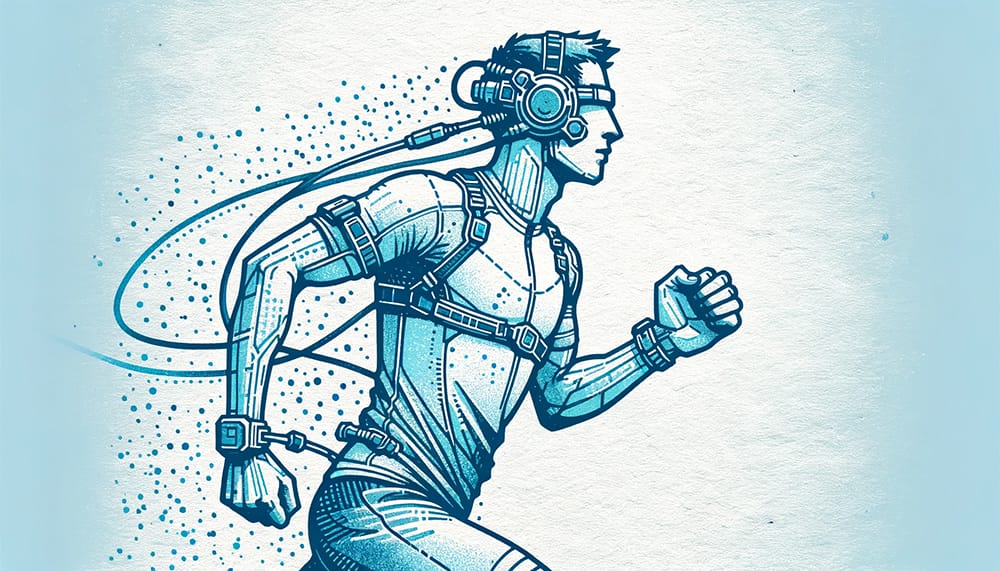The Intersection of HRV and Athletic Performance
In the dynamic world of sports science, Heart Rate Variability (HRV) has risen as a crucial metric for athletes aiming to optimize their performance and recovery. This in-depth exploration delves into how HRV is revolutionizing sports science, transforming the way athletes train and recover.
HRV’s role in sports is multifaceted. It’s not just about heartbeats; it’s about comprehending an athlete’s physiological readiness and recovery state. With HRV, athletes and coaches can make informed, data-driven decisions, personalizing training and rest periods for peak performance. This marks a significant shift from generic training methodologies to individualized regimens.
“In the arena of sports, heart rate variability emerges as a key player, orchestrating a symphony of training, recovery, and peak performance, tailored to the unique rhythm of each athlete.”
HRV offers a unique perspective on an athlete’s body, revealing insights about physical conditioning, stress levels, and recovery needs. By monitoring fluctuations in HRV, athletes can identify when their bodies are primed for intense training and when they require rest. This approach enhances training efficacy, reduces injury risk, and optimizes performance.
For a foundational understanding of HRV, refer to our Ultimate Guide to Heart Rate Variability., which covers the basics and significance of this vital health metric.
The Science Behind HRV in Sports Training

HRV serves as a critical indicator of the autonomic nervous system’s balance, particularly between the sympathetic and parasympathetic nervous systems. For athletes, this balance is vital. Elevated HRV often signifies a state of rest and recovery, with dominant parasympathetic activity, making it ideal for engaging in high-intensity training. On the other hand, reduced HRV indicates increased sympathetic activity, often necessitating rest and recovery.
“HRV in sports is not just about performance metrics; it’s a compass guiding athletes towards optimal training and recovery.”
This scientific understanding of HRV allows for a more sophisticated approach to athletic training. It moves beyond subjective measures like perceived exertion, providing concrete, quantifiable data that reflects an athlete’s physiological state. This objectivity is key in preventing overtraining, a common pitfall in sports, and optimizing training schedules for maximum efficacy.
Implementing HRV in Training Regimens
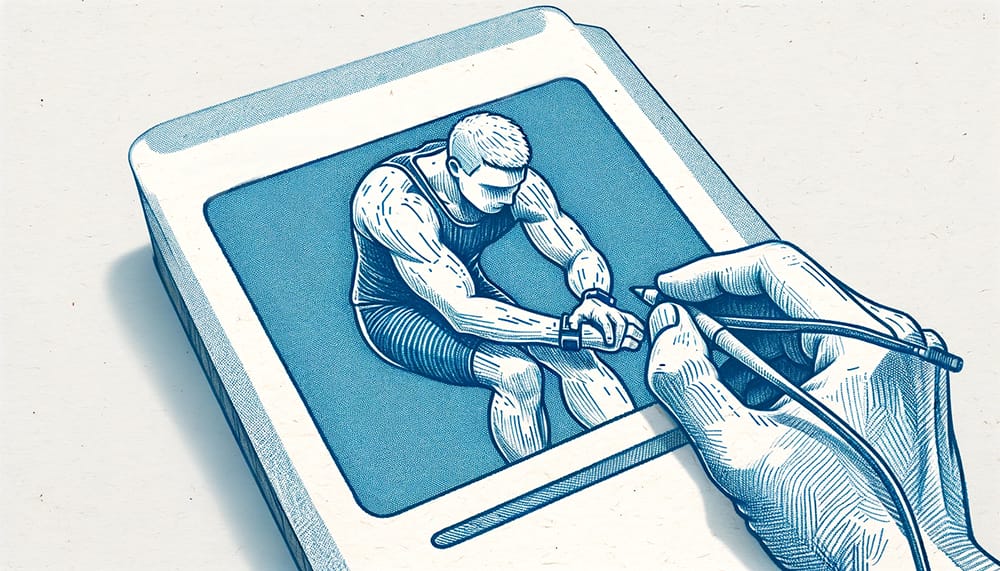
The integration of HRV monitoring in training regimens marks a significant evolution in athletic training. Athletes can now adapt their training intensity based on their physiological readiness as indicated by HRV. This method ensures training efforts align with the body’s capacity, fostering better performance gains and minimizing the risk of fatigue or injury. Explore innovative approaches in chronic pain management with heart rate variability in our article, “HRV and Chronic Pain Management: A New Perspective“.
Monitoring HRV also helps in detecting patterns and trends over time. Fluctuations in HRV can signal the need for adjustments in training intensity or recovery strategies. This level of customization is particularly valuable for high-level athletes, where marginal gains can be crucial.
HRV and Recovery: Holistic Approach to Athletic Well-being
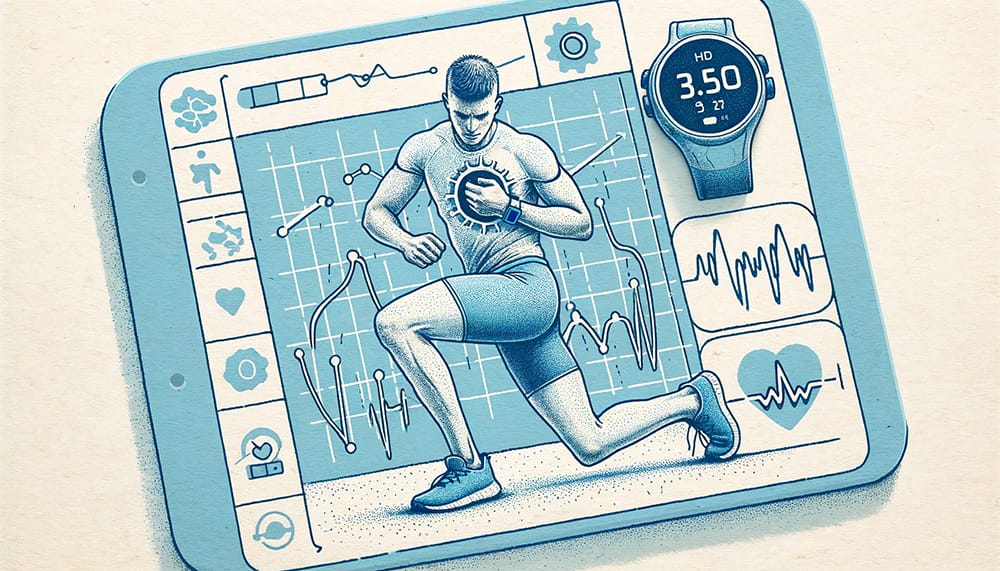
Recovery in sports transcends physical rest. It encompasses the body’s return to a state of balance and restoration. HRV plays a critical role in monitoring this recovery phase. It provides insights into how the body is responding to training stress and adapting over time. Stable or improving HRV suggests effective recovery, essential for maintaining peak physical condition and preventing burnout.
“Effective recovery is the foundation of athletic success. HRV offers a window into the body’s recovery process, guiding athletes towards balanced well-being.”
HRV also sheds light on other lifestyle factors affecting recovery, such as sleep quality, stress management, and nutrition. This comprehensive approach encourages athletes to adopt a holistic view of wellness, encompassing mental and emotional health alongside physical training.
Discover key strategies for stress management and recovery through heart rate variability in our concise article, “HRV in Stress Management and Recovery“.
Ballistocardiography: A Revolutionary Approach to HRV Measurement
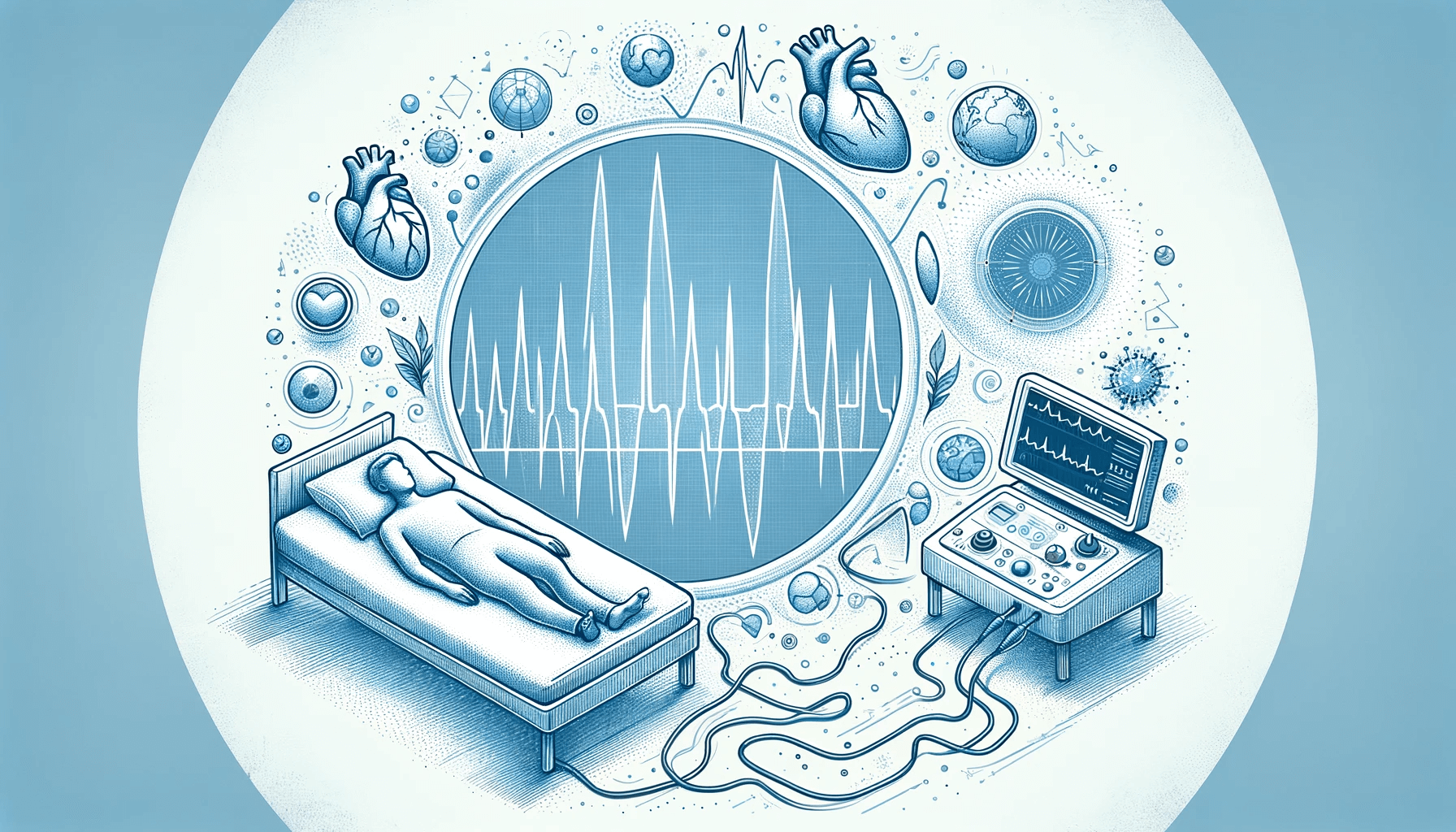
Ballistocardiography represents a groundbreaking development in HRV measurement. This non-contact method allows for the assessment of HRV without the need for direct physical interaction with the subject. Bed sensors, for example, can be seamlessly integrated into an athlete’s bed, capturing HRV data throughout the night without any active user involvement. This ease of use and non-intrusive nature make ballistocardiography an attractive option for continuous HRV monitoring, particularly in sleep studies and long-term health tracking.
“Ballistocardiography revolutionizes HRV monitoring, offering a seamless, user-friendly approach to understanding an athlete’s recovery and readiness.”
This technology’s convenience is particularly beneficial for athletes, as it enables uninterrupted HRV monitoring during sleep, providing valuable insights into nocturnal recovery patterns. This data is crucial for optimizing training schedules and ensuring adequate rest, key components in an athlete’s performance and overall well-being.
Delve into the complexities of measuring heart rate variability in our detailed article, “Unraveling the Intricacies of HRV Measurement Techniques“.
Research-Grade Devices: Elevating HRV Accuracy
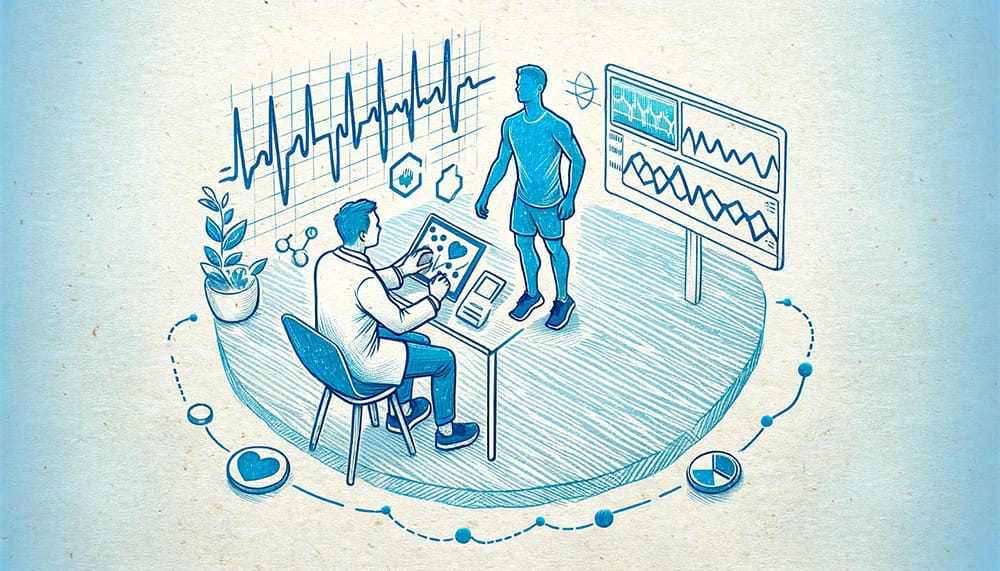
In the realm of sports science, the accuracy of HRV data is paramount. Research-grade devices, such as chest strap monitors and electrode-based systems, offer high precision in HRV measurement. These devices, often used in controlled research settings, provide detailed heart rate data, capturing even the subtlest variations in heart rhythms.
These research-grade HRV monitors are particularly useful in professional sports settings where accurate, real-time data is crucial. Athletes and coaches rely on the precision of these devices to make informed decisions about training intensity and recovery needs. The data obtained from these monitors can be instrumental in designing training programs that are not only effective but also aligned with the athlete’s physiological state.
“Research-grade HRV devices bring a new level of precision to sports science, enabling athletes and coaches to make data-driven decisions with confidence.”
Learn about the vital link between heart rate variability and nutrition in our insightful article, “HRV and Nutrition: Exploring the Heart-Gut Connection“.
Overcoming Challenges in Applying HRV in Sports
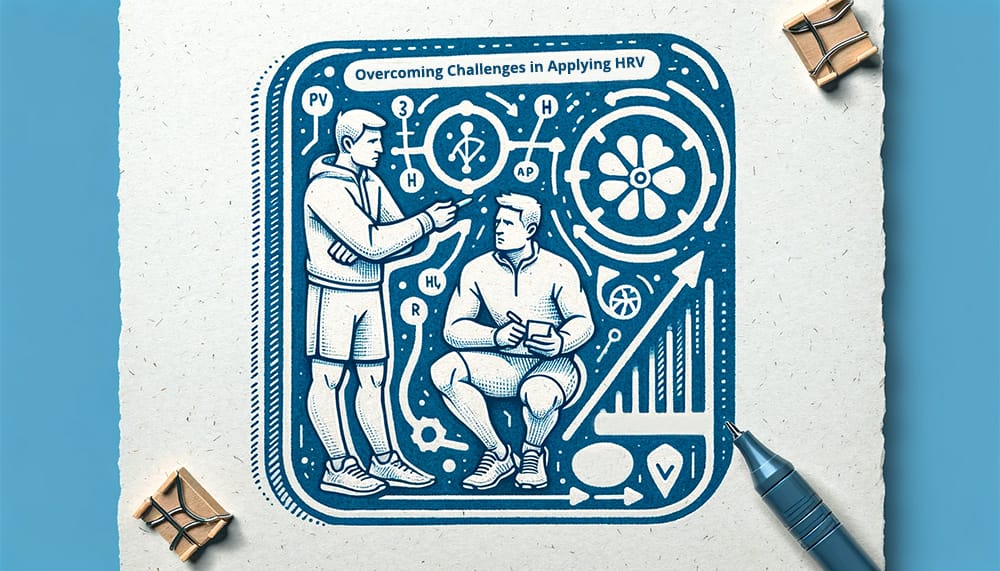
The application of HRV in sports, while powerful, presents certain challenges. Individual variability in HRV necessitates a personalized approach to data interpretation. Athletes must understand that their ‘normal’ HRV range may differ significantly from their peers, requiring customized analysis and application.
“Mastering HRV application in sports requires understanding its nuances, turning challenges into opportunities for peak performance.”
External factors like altitude, temperature, and hydration levels can also impact HRV readings. Athletes and coaches need to be mindful of these variables to ensure accurate HRV interpretation. Consistent monitoring and education are key to effectively using HRV as a tool for sports performance enhancement.

The Future of HRV in Sports Science
The future of HRV in sports science is brimming with possibilities. Advancements in wearable technology and data analysis are making HRV monitoring more sophisticated and accessible. Ongoing research continues to uncover new applications of HRV, further solidifying its role in sports performance and recovery.
As our understanding of HRV deepens, its impact on athletic training methodologies, athlete well-being, and overall performance will continue to grow. HRV is not just a tool for the present but a foundation for the future of sports science and athlete development.
Conclusion: The Transformative Power of HRV in Sports

HRV has become an indispensable tool in sports science, offering insights that go beyond conventional training approaches. It provides a detailed picture of an athlete’s physiological state, ushering in a new era of performance optimization.
As we continue to explore HRV’s potential, we open new avenues in athletic training. HRV is more than a metric; it’s a key to unlocking athletic potential and sustaining long-term sports performance.
You Might Also Be Interested
- 📚 Delve into our comprehensive HRV Article Collection for insightful perspectives on Heart Rate Variability (HRV).
- 🔍 Learn how the advanced features of Fibion Emfit & Fibion Vital can aid you in your HRV research.
- 📅 Planning an HRV measurement and analysis? For a chat with our HRV expert, book a session with Dr. Miriam Cabrita.
Frequently Asked Questions About This Topic:
How does HRV impact athletic performance and training? +
HRV helps athletes and coaches understand physiological readiness and recovery, allowing them to personalize training and rest for optimal performance. It shifts focus from generic training to individualized regimens.
What scientific principle underlies the use of HRV in sports training? +
HRV indicates the balance between the sympathetic and parasympathetic nervous systems. Elevated HRV suggests readiness for intense training, while reduced HRV indicates a need for recovery.
How is HRV implemented in athletes’ training regimens? +
Athletes adapt their training intensity based on HRV, aligning effort with the body’s readiness. Monitoring HRV helps in customizing training and recovery strategies, enhancing performance and reducing injury risks.
What role does HRV play in athletes’ recovery? +
HRV is critical in monitoring the recovery phase, providing insights into how the body responds to training stress and adapts. It guides athletes towards balanced physical and mental well-being.
What is ballistocardiography and its relevance in HRV measurement for athletes? +
Ballistocardiography is a non-contact method for HRV assessment, allowing for seamless, non-intrusive monitoring, especially during sleep. It’s beneficial for continuous HRV tracking, crucial for athletes’ recovery analysis.
What challenges do athletes face in applying HRV, and what’s its future in sports science? +
Challenges include individual variability in HRV and external factors affecting readings. The future of HRV in sports is promising, with advancements in technology enhancing its accuracy and application in athlete training and recovery.

